Charles E W Bean, Diaries, AWM38 3DRL 606/259/1 - 1917 - 1927 - Part 1
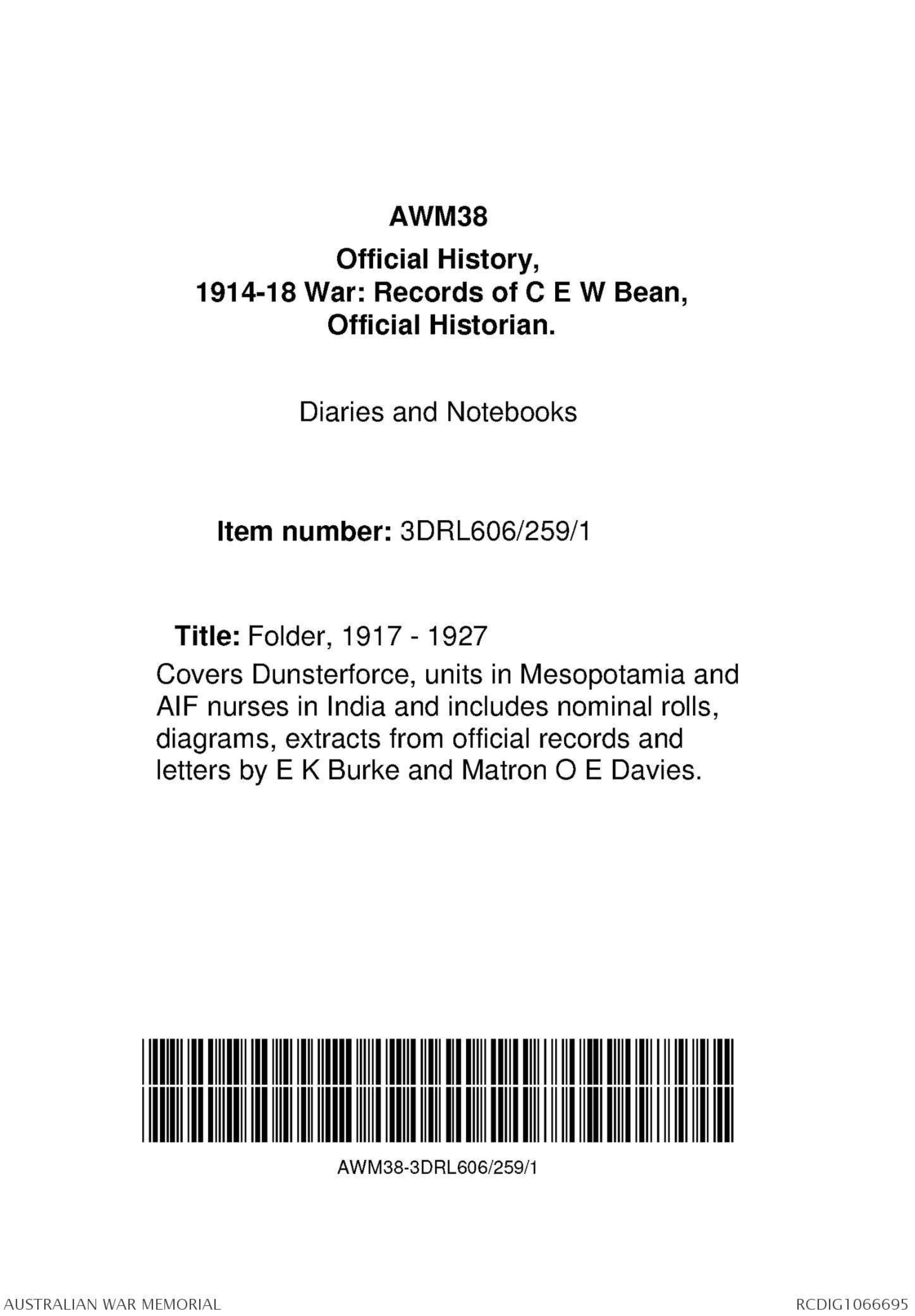
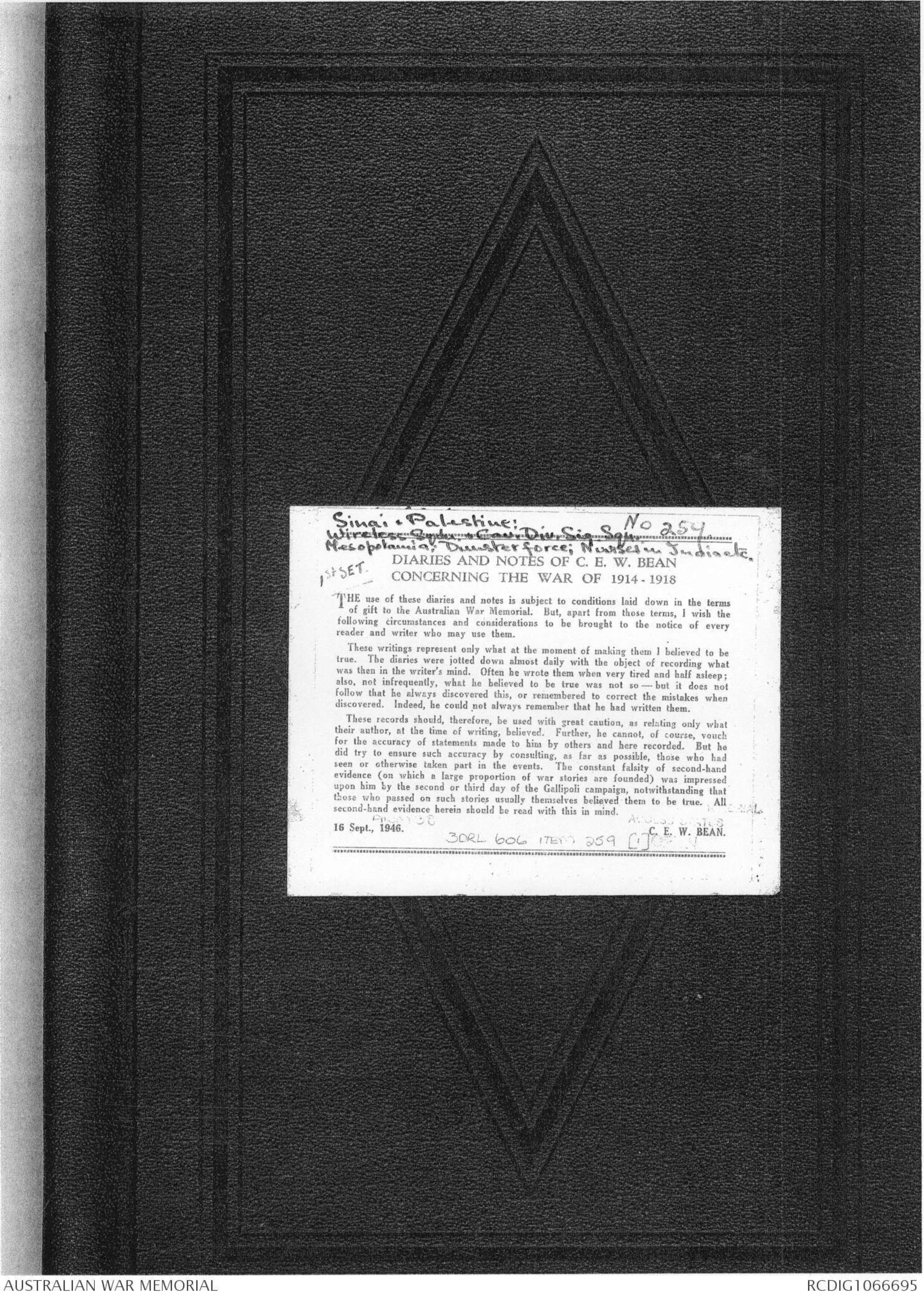
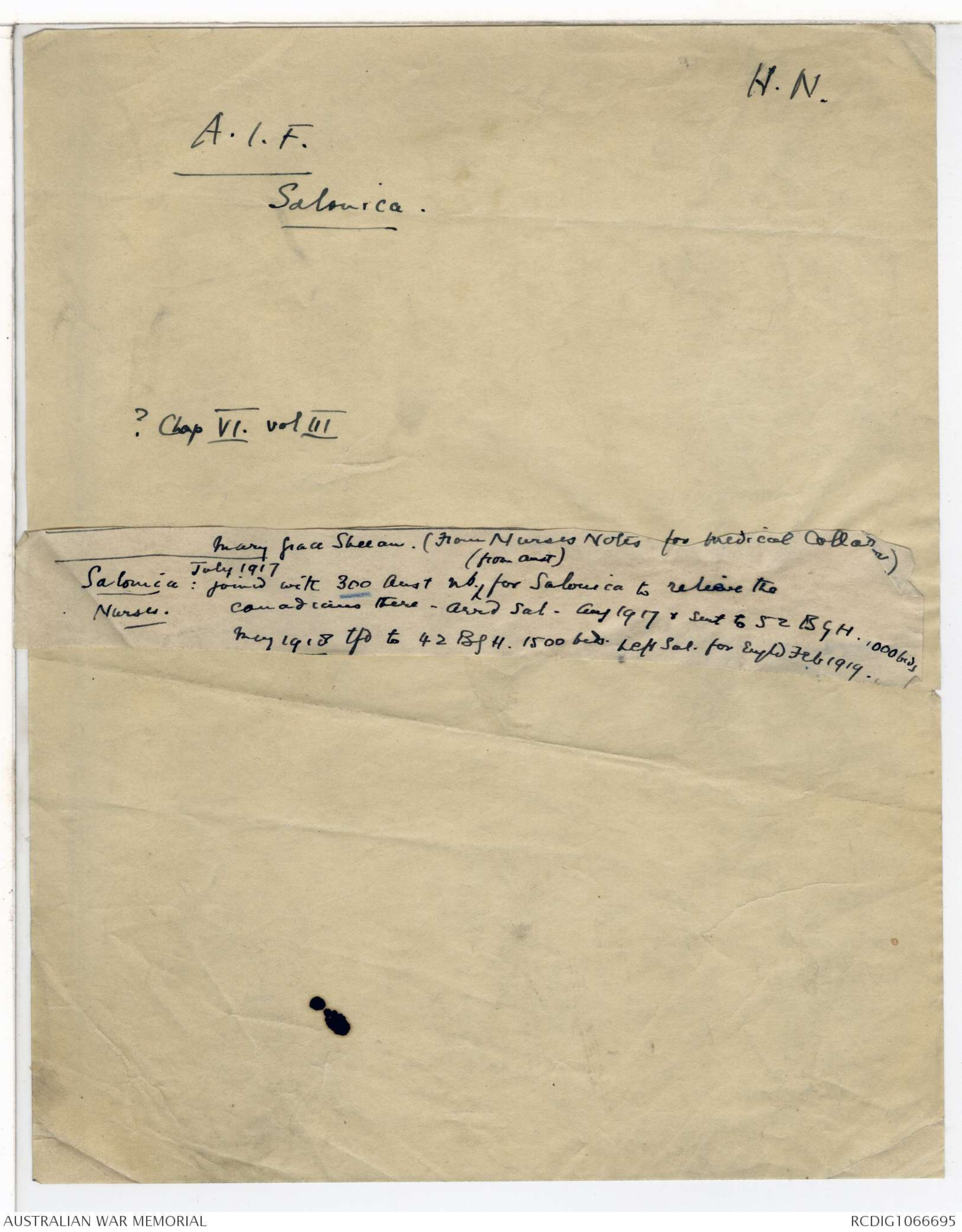
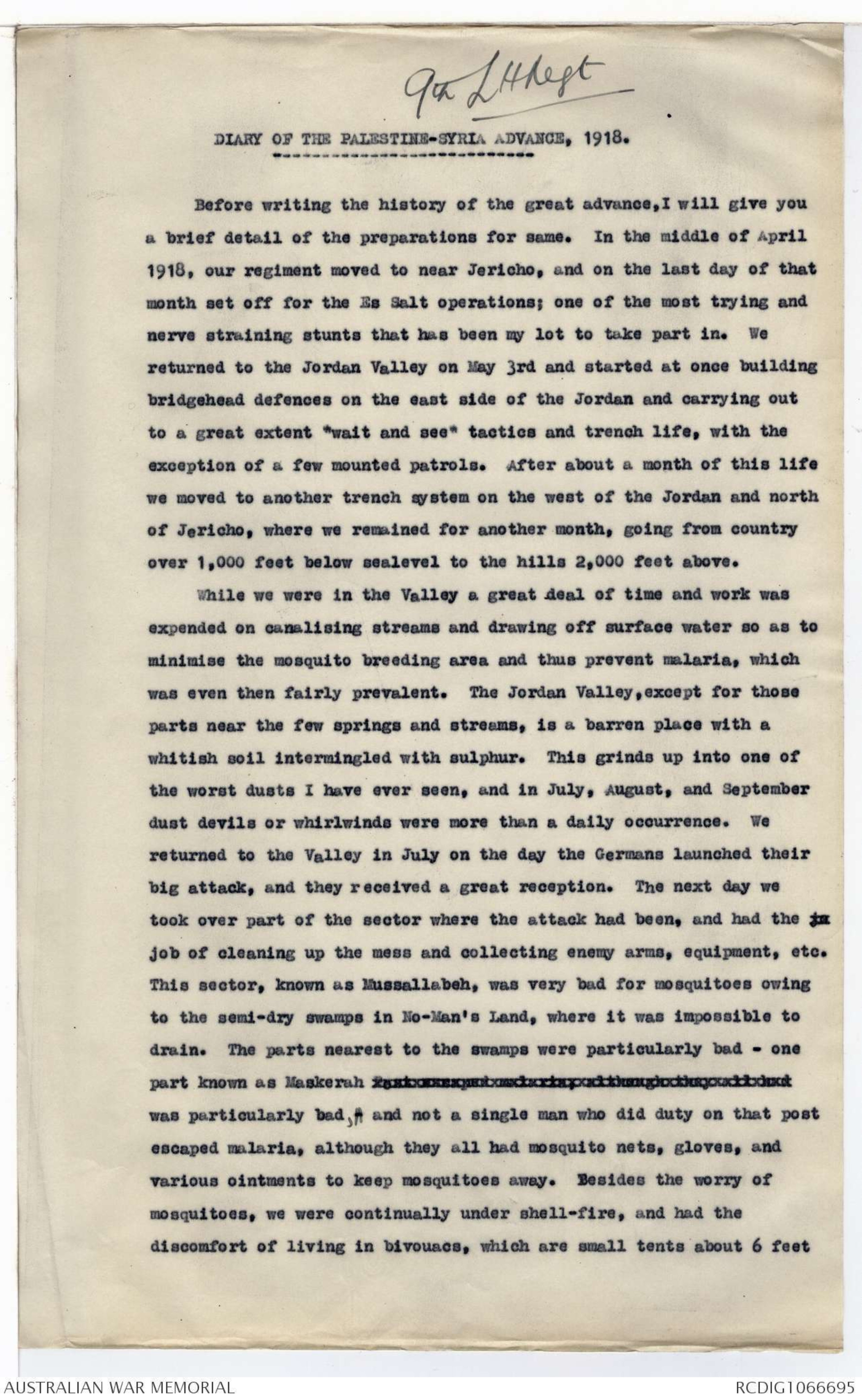
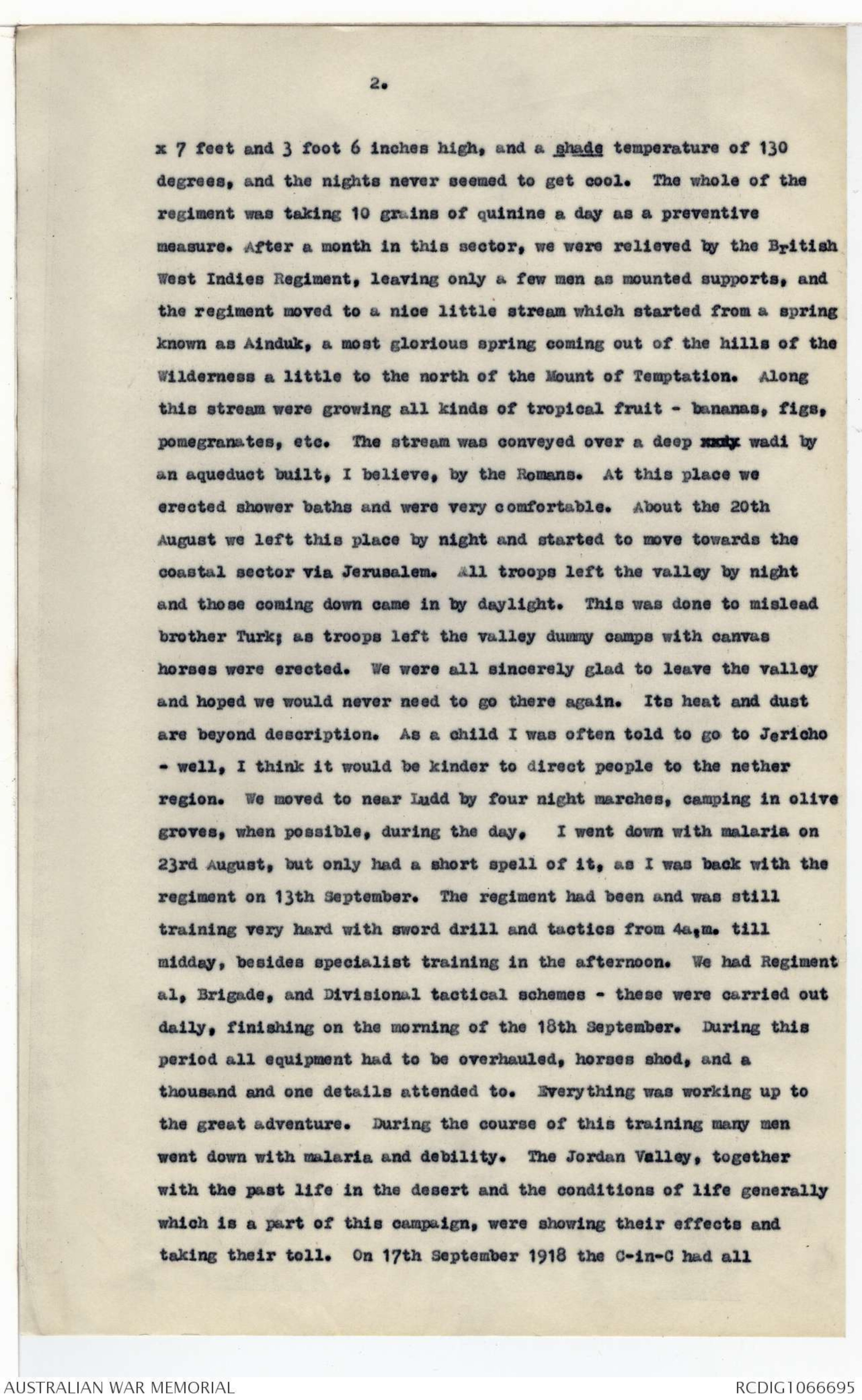
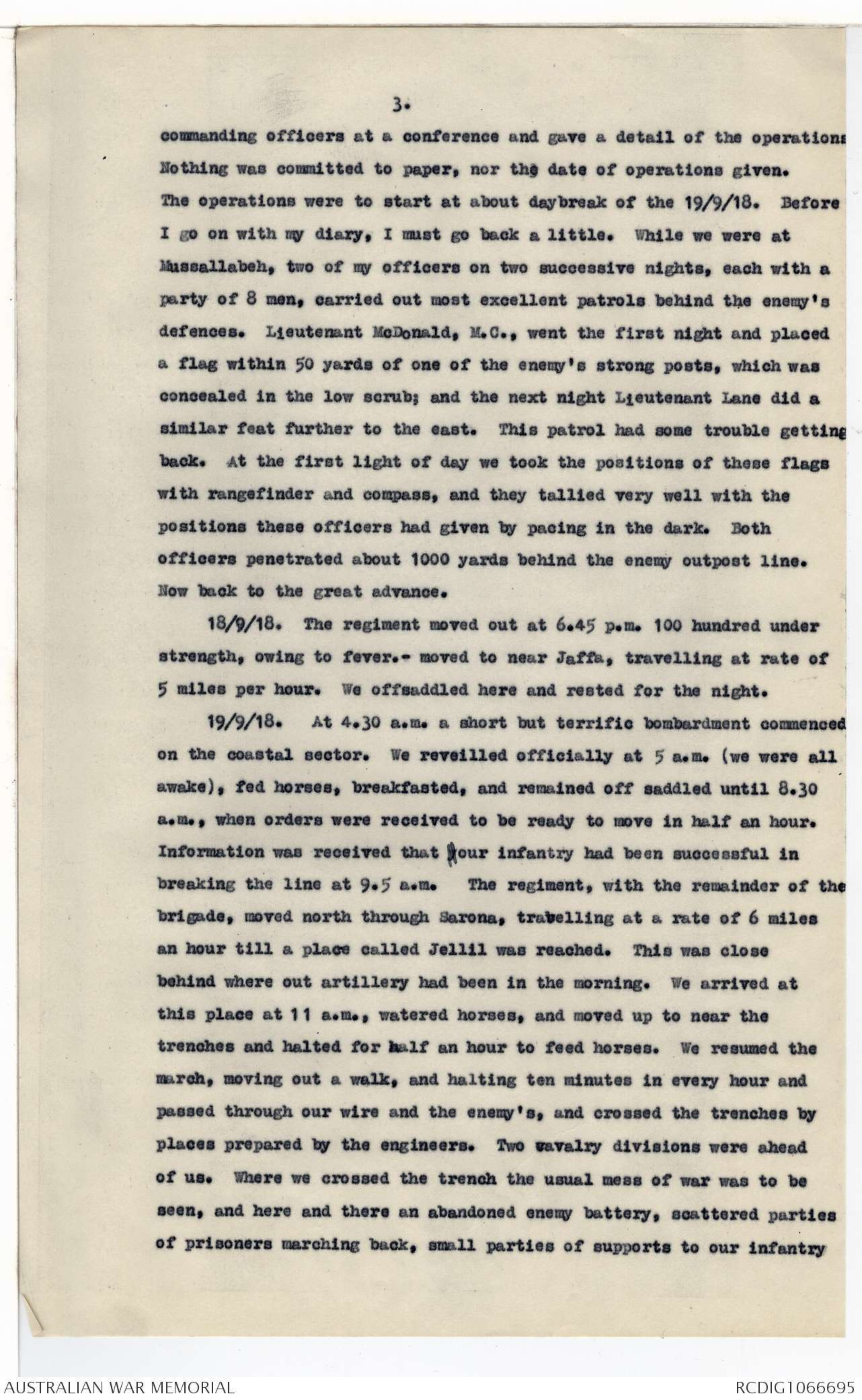
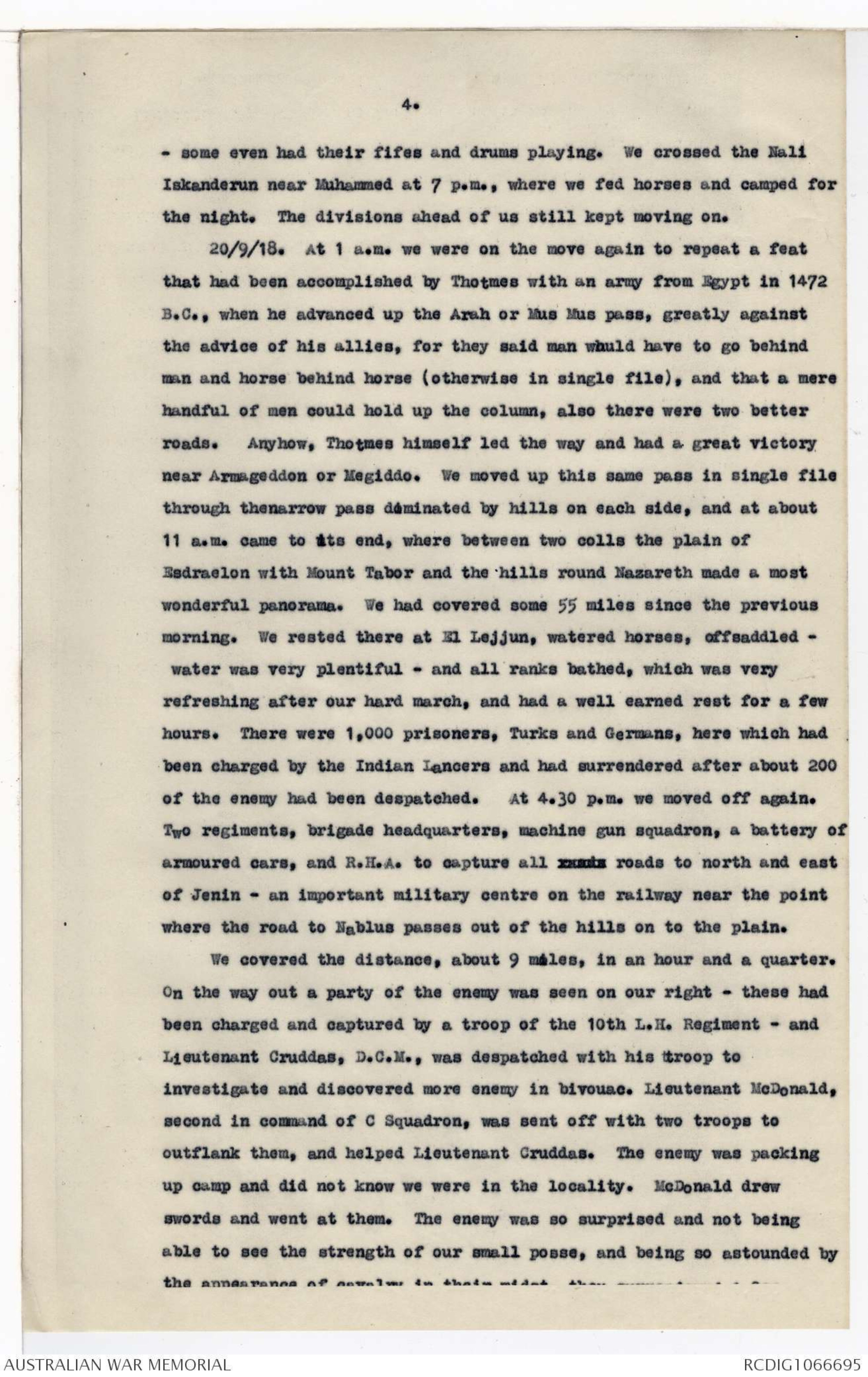
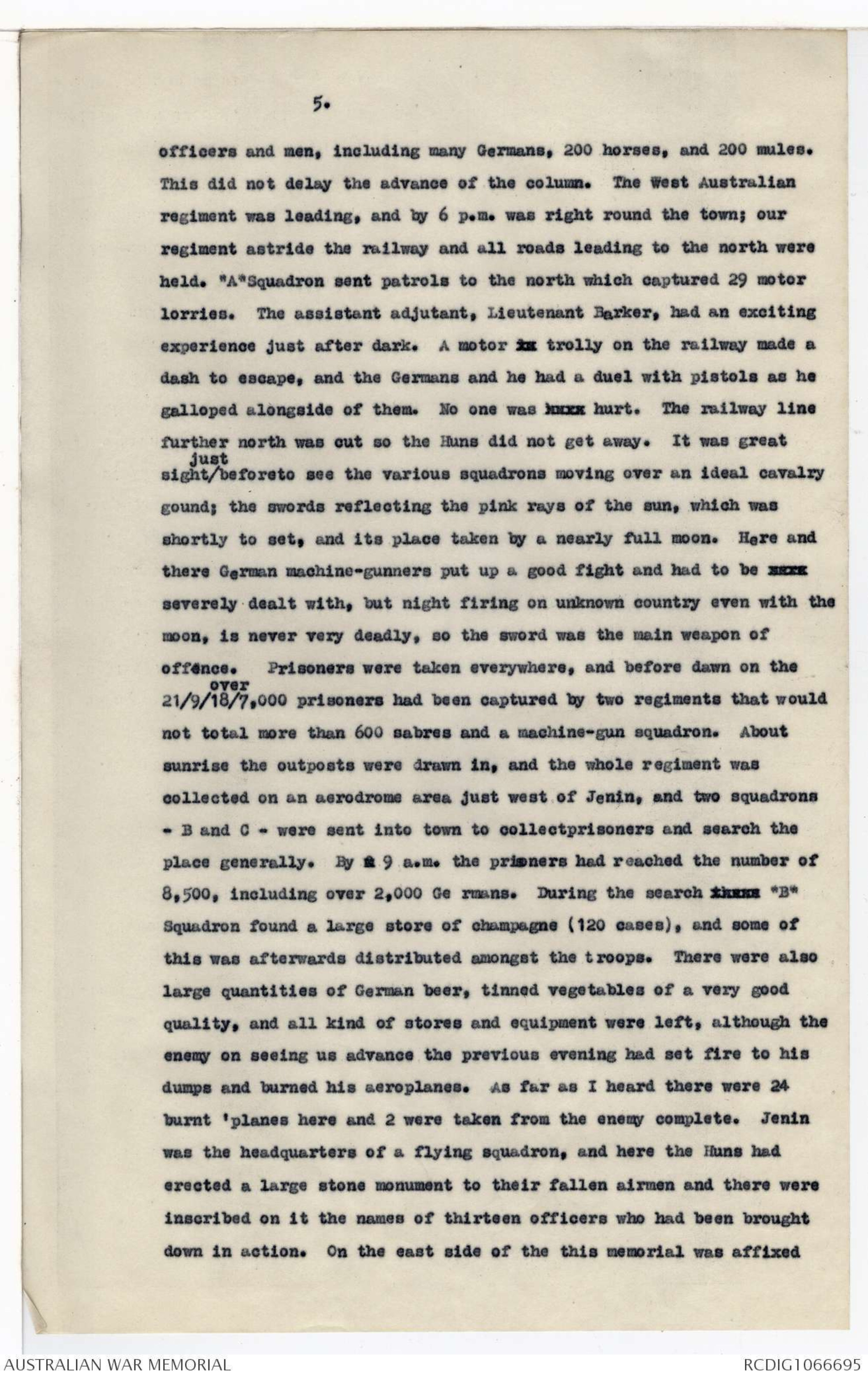
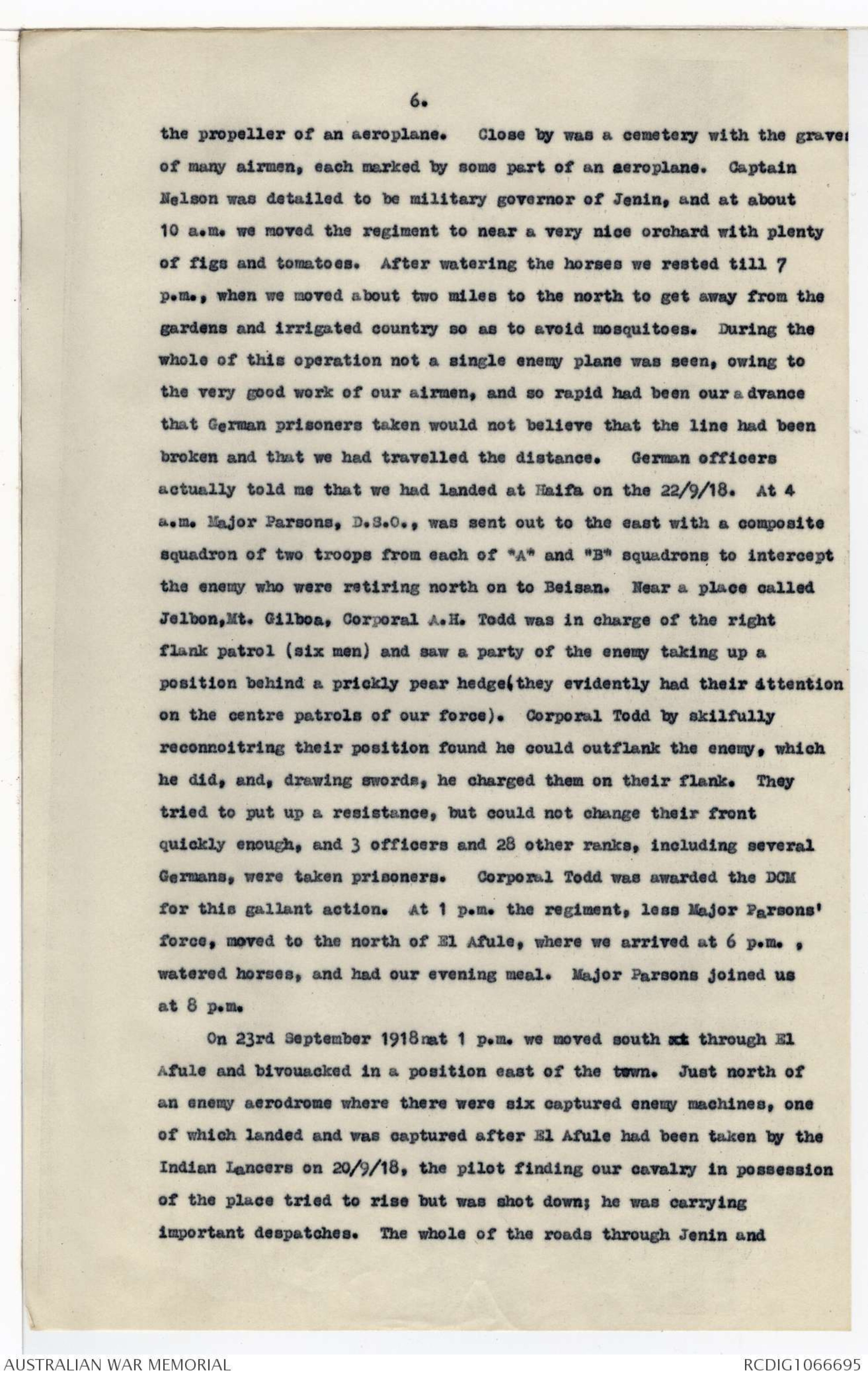
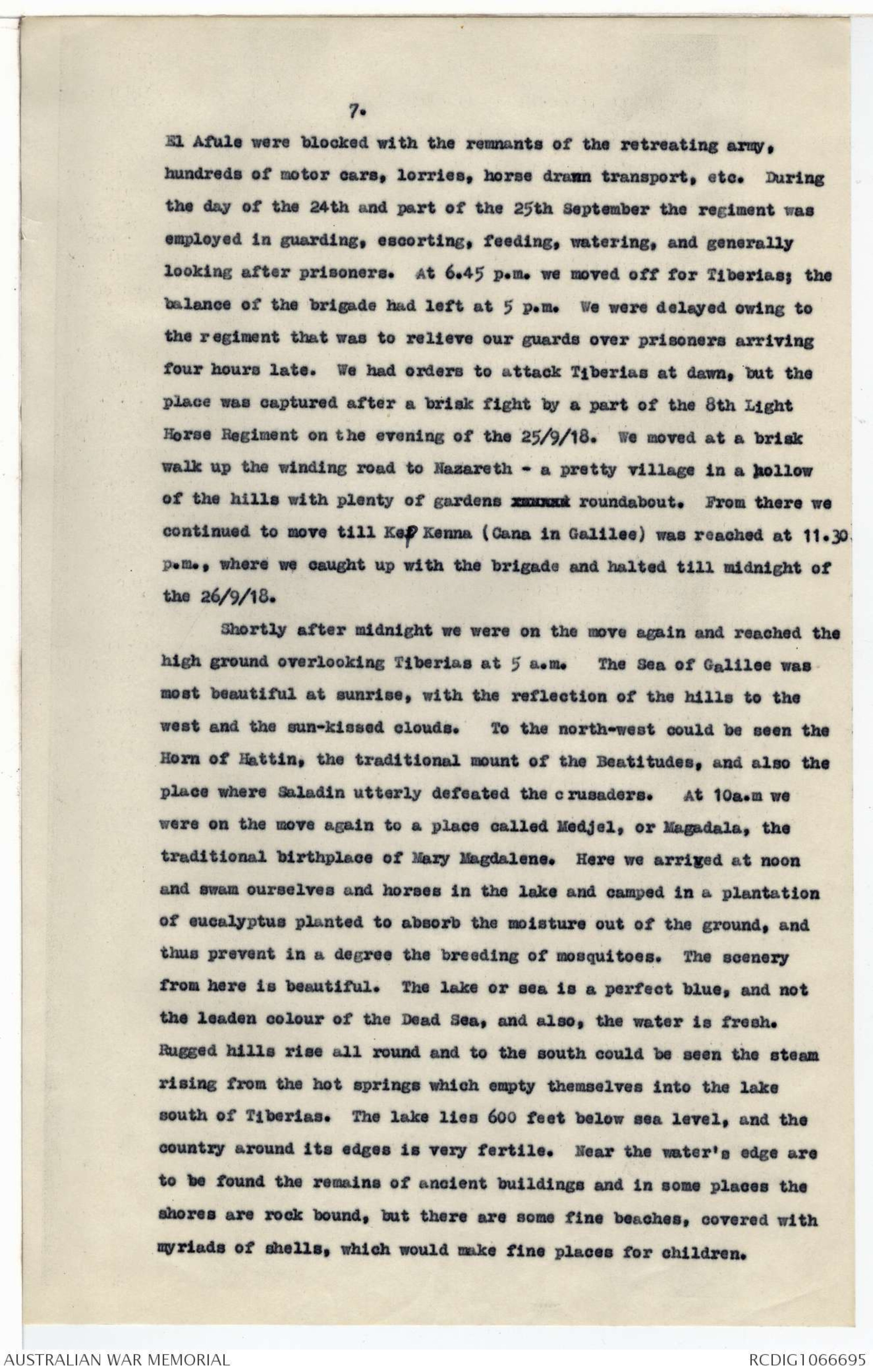
AWM38
Official History,
1914-18 War: Records of C E W Bean,
Official Historian.
Diaries and Notebooks
Item number: 3DRL606/259/1
Title: Folder, 1917 - 1927
Covers Dunsterforce, units in Mesopotamia and
AIF nurses in India and includes nominal rolls,
diagrams, extract from official records and
letters by E K Burke and Matron O E Davies.
AWM38-3DRL606/259/1
No 259
Sinai & Palestine:
Wireless [[Sydes?]] & Cav, Div, Sig, Squ.
Mesopotamia; Dunsterforce; Nurses in Judia etc.
1st SET
DIARIES AND NOTES OF C. E. W. BEAN
CONCERNING THE WAR OF 1914 - 1918
The use of these diaries and notes is subject to conditions laid down in the terms
of gift to the Australian War Memorial. But, apart from those terms, I wish the
following circumstances and considerations to be brought to the notice of every
reader and writer who may use them.
These writings represent only what at the moment of making them I believed to be
true. The diaries were jotted down almost daily with the object of recording what
was then in the writer's mind. Often he wrote them when very tired and half asleep;
also, not infrequently, what he believed to be true was not so - but it does not
follow that he always discovered this, or remembered to correct the mistakes when
discovered. Indeed, he could not always remember that he had written them.
These records should, therefore, be used with great caution, as relating only what
their author, at the time of writing believed. Further, he cannot, or course, vouch
for the accuracy of statements made to him by others and here recorded. But he
did try to ensure such accuracy by consulting, as far as possible, those who had
seen or otherwise taken part in the events. The constant falsity of second-hand
evidence (on which a large proportion of war stories are founded) was impressed
upon him by the second or third day of the Gallipoli campaign, notwithstanding that
those who passed on such stories usually themselves believed them to be true. All
second-hand evidence herein should be read with this in mind.
16 Sept., 1946
C. E. W. BEAN
AWM38
ACCESS STATUS
OPEN
3DRL 606 ITEM 259 [1]
H.N.
A.I.F
Salonica
?Chap VI. vol III
Mary Grace Sheean. (From Nurses notes for medical [[colla?]]
July 1917
Salonica: joined with 300 Aust nb. ^(from Aust) for Salonica to relieve the
Nurses. canadians there - arrvd Sal. Aug 1917 & sent to 52 BGH. 1000beds
May 1918 tfd to 42 BGH. 1500 beds. Left Sal. for Englands Feb 1919.
9th LHRegt
DIARY OF THE PALESTINE-SYRIA ADVANCE, 1918
Before writing the history of the great advance, I will give you
a brief detail of the preparations for same. In the middle of April
1918, our regiment moved to near Jericho, and on the last day of that
month set off for the Es Salt operations; one of the most trying and
nerve straining stunts that has been my lot to take part in. We
returned to the Jordan Valley on May 3rd and started at once building
bridgehead defences on the east side of the Jordan and carrying out
to a great extent "wait and see" tactics and trench life, with the
exception of a few mounted patrols. After about a month of this life
we moved to another trench system on the west of the Jordan and north
of Jericho, where we remained for another month, going from country
over 1,000 feet below sealevel to the hills 2,000 feet above.
While we were in the Valley a great deal of time and work was
expended on canalising streams and drawing off surface water so as to
minimise the mosquito breeding area and thus prevent malaria, which
was even then fairly prevalent. The Jordan Valley, except for those
parts near the few springs and streams, is a barren place with a
whitish soil intermingled with sulphur. This grinds up into one of
the worst dusts I have ever seen, and in July, August, and September
dust devils or whirlwinds were more than a daily occurrence. We
returned to the Valley in July on the day the Germans launched their
big attack, and they received a great reception. The next day we
took over part of the sector where the attack had been, and had the xx
job of cleaning up the mess and collecting enemy arms, equipment, etc.
This sector, known as Mussallabeh, was very bad for mosquitoes owing
to the semi-dry swamps in No-Man's Land, where it was impossible to
drain. The parts nearest to the swamps were particularly bad - one
part known as Maskerah xxxxxxxxxxxxxxxxxxxxxxxxxxxxxxxxxxx
was particularly bad - and not a single man who did duty on that post
escaped malaria, although they all has mosquito nets, gloves, and
various ointments to keep mosquitoes away. Besides the worry of
mosquitoes, we were continually under shell-fire, and had the
discomfort of living in bivouacs, which are small tents about 6 feet
2.
x 7 feet and 3 foot 6 inches high, and a shade temperature of 130
degrees, and the nights never seemed to get cool. The whole of the
regiment was taking 10 grains of quinine a day as a preventative
measure. After a month in this sector, we were relieved by the British
West Indies Regiment, leaving only a few men as mounted supports, and
the regiment moved to a nice little stream which started from a spring
known as Ainduk, a most glorious spring coming out of the hills of the
Wilderness a little to the north of the Mount of Temptation. Along
this stream were growing all kinds of tropical fruit - bananas, figs,
pomegranates, etc. The stream was conveyed over a deep xxxx wadi by
an aqueduct built, I believe, by the Romans. At this place we
erected shower baths and were very comfortable. About the 20th
August we left this place by night and started to move towards the
coastal sector via Jerusalem. All troops left the valley by night
and those coming down came in by daylight. This was done to mislead
brother Turk; as troops left the valley dummy camps with canvas
horses were erected. We were all sincerely glad to leave the valley
and hoped we would never need to go there again. Its heat and dust
are beyond description. As a child I was often told to go to Jericho
- well, I think it would be kinder to direct people to the nether
region. We moved to near Ludd by four night marches, camping in olive
groves, when possible, during the day. I went down with malaria on
23rd August, but only had a short spell of it, as I was back with the
regiment on 13th September. The regiment had been and was still
training very had with sword drill and tactics from 4a.m. till
midday, besides specialist training in the afternoon. We had Regimental,
Brigade, and Divisional tactical schemes - these were carried out
daily, finishing on the morning of the 18th September. During this
period all equipment had to be overhauled, horses shod, and a
thousand and one details attended to. Everything was working up to
the great adventure. During the course of this training many men
went down with malaria and debility. The Jordan Valley, together
with the past life in the desert and the conditions of life generally
which is a part of this campaign, were showing their effects and
taking their toll. On 17th September 1918 the C-in-C had all
3.
commanding officers at a conference and gave a detail of the operations.
Nothing was committed to paper, nor the date of operations given.
The operations were to start at about daybreak of the 19/9/18. Before
I go on with my diary, I must go back a little. While we were at
Mussallabeh, two of my officers on two successive nights, each with a
party of 8 men, carried out most excellent patrols behind the enemy's
defences. Lieutenant McDonald, M.C., went the first night and placed
a flag within 50 yards of one of the enemy's strong posts, which was
concealed in the low scrub; and the next night Lieutenant Lane did a
similar feat further to the east. This patrol had some trouble getting
back. At the first light of day we took the positions of these flags
with rangefinder and compass, and they tallied very well with the
positions these officers had given by pacing in the dark. Both
officers penetrated about 1000 yards behind the enemy outpost line.
Now back to the great advance.
18/9/18. The regiment moved out at 6.45 p.m. 100 hundred under
strength, owing to fever.- moved to near Jaffa, travelling at rate of
5 miles per hour. We offsaddled here and rested for the night.
19/9/18. At 4.30 a.m. a short but terrific bombardment commenced
on the coastal sector. We reveilled officially at 5 a.m. (we were all
awake), fed horses, breakfasted, and remained off saddled until 8.30
a.m., when orders were received to be ready to move in half an hour.
Information was received that your infantry had been successful in
breaking the line at 9.45 a.m. The regiment, with the remainder of the
brigade, moved north through Sarona, travelling at a rate of 6 miles
an hour till a place called Jellil was reached. This was clost
behind where out artillery had been in the morning. We arrived at
this place at 11 a.m., watered horses, and moved up to near the
trenches and halted for half and hour to feed horses. We resumed the
march, moving out a walk, and halting ten minutes in every hour and
passed through our wire and the enemy's, and crossed the trenches by
places prepared by the engineers. Two cavalry divisions were ahead
of us. Where we crossed the trench the usual mess of war was to be
seen, and here and there an abandoned enemy battery, scattered parties
of prisoners marching back, small parties of supports to our infantry
4.
- some even had their fifes and drums playing. We crossed the Nali
Iskanderun near Muhammed at 7 p.m., where we fed horses and camped for
the night. The divisions ahead of us still kept moving on.
20/9/18. At 1 a.m. we were on the move again to repeat a feat
that had been accomplished by Thotmes with an army from Egypt in 1472
B.C., when he advanced up the Arah or Mus Mus pass, greatly against
the advice of allies, for they said man whuld have to go behind
man and horse behind horse (otherwise in single file), and that a mere
handful of men could hold up the column, also there were two better
roads. Anyhow, Thotmes himself led the way and had a great victory
near Armageddon or Megiddo. We moved up this same pass in single file
through the narrow pass dominated by hills on each side, and at about
11 a.m. came to its end, where between tow colls the plain of
Esdraelon with Mount Tabor and the hills round Nazareth made a most
wonderful panorama. We had covered some 55 miles since the previous
morning. We rested there at El Lejjun, watered horses, offsaddled -
water was plentiful - and all ranks bathed, which was very
refreshing after our hard march, and had a well earned rest for a few
hours. There were 1,000 prisoners, Turks and Germans, here which had
been charged by the Indian Lancers and had surrended after about 200
of the enemy had been despatched. At 4.20 p.m.we moved off again.
Two regiments, brigade headquarters, machine gun squadron, a battery of
armoured cars, and R.H.A. to capture all xxxxx roads to north and east
of Jenin - an important military centre on the railway near the point
where the road to Nablus passes out of the hills on the the plain.
We covered the distance, about 9 miles in an hour and quarter.
On the way out a party of the enemy was seen on our right - these had
been charged and captured by a troop of the 10th L.H. Regiment - and
Lieutenant Cruddas, D.C.M., was despatched with his troop to
investigate and discovered more enemy in bivouac. Lieutenant McDonald,
second in command of C Squadron, was sent off with two troops to
outflank them, and helped Lieutenant Cruddas. The enemy was packing
up camp and did not know we were in the locality. McDonald drew
swords and went at them. The enemy was so surprised and not being
able to see the strength of our small posse, and being so astounded by the appearance of cavalry in their midst [[??]]
5.
officers and men, including many Germans, 200 horses, and 200 mules.
This did not delay the advance of the column. The West Australian
regiment was leading, and by 6 p.m. was right round the town; our
regiment astride the railway and all roads leading to the north were
held. "A"Squadron sent patrols to the north which captured 29 motor
lorries. The assistant adjutant, Lieutenant Barker, had an exciting
experience just after dark. A motor xx trolly on the railway made a
dash to escape, and the Germans and he had a duel with pistols as he
galloped alongside of them. No one was xxxx hurt. The railway line
further north was cut so the Huns did not get away. It was great
sight ^just beforeto see the various squadrons moving over an ideal cavalry
gound; the swords reflecting the pink rays of the sun, which was
shortly to set, and its place taken by a nearly full moon. Here and
there German machine-gunners put up a good fight and had to be xxxx
severely dealt with, so the sword was the main weapon of
offence. Prisoners were taken everywhere, and before dawn on the
21/9/18 ^over 7,000 prisoners had been captured by two regiments that would
not total more than 600 sabres and a machine-gun squadron. About
sunrise the outposts were drawn in, and the whole regiment was
collected on an aerodrome area just west of Jenin, and two squadrons
- B and C - were sent into town to collectprisoners and search the
place generally. By x 9 a.m. the prisoners had reached the number of
8,500, including over 2,000 Ge rmans. During the search xxxxx "B"
Squadron found a large store of champagne (120 cases), and some of
this was afterwards distributed amongst the troops. There were also
large quantities of German beer, tinned vegetables of a very good
quality, and all kind of stores and equipment were left, although the
enemy on seeing us advance the previous evening had set fire to his
dumps and burned his aeroplanes. As far as I heard there were 24
burnt 'planes here and 2 were taken from the enemy complete. Jenin
was the headquarters of a flying squadron, and here the Huns had
erected a large stone monument to their fallen airmen and there were
inscribed on it the names of thirteen officers who had been brought
down in action. On the east side of this memorial was affixed
6.
the propeller of aeroplane. Close by was a cemetery with the graves
of many airmen, each marked by some part of an aeroplane. Captain
Nelson was detailed to be military governor of Jenin, and at about
10 a.m. we moved the regiment to near a very nice orchard with plenty
of figs and tomatoes. After watering the horses we rested till 7
p.m., when we moved about two miles to the north to get away from the
gardens and irrigated country so as to avoid mosquitoes. During the
whole of this operation not a single enemy plane was seen, owing to
the very good work fo our airmen, and so rapid had been our advance
that German prisoners taken would not believe that the line had been
broken and that we had travelled the distance. German officers
actually told me that we had landed at Haifa on the 22/9.18. At 4
a.m. Major Parsons, D.S.O., was sent out to the east with a composite
squadron of two troops from each of "A" and "B" squadrons to intercept
the enemy who were retiring north on to Beisan. Near a place called
Jelbon, Mt. Gilboa, Corporal A.H. Todd was in charge of the right
flank patrol (six men) and saw a party of the enemy taking up a
position behind a prickly pear hedge, (they evidently had their attention
on the centre patrols of our force). Corporal Todd by skilfully
reconnoitring their position found he could outflank the enemy, which
he did, and, drawing swords, he charged them on their flank. They
tried to put up a resistance, but could not change their front
quickly enough, and 3 officers and 28 other ranks, including several
Germans, were taken prisoners. Corporal Toss was awarded the DCM
for this gallant action. At 1 p.m. the regiment, less Major Parsons'
force, moved to the north of El Afule, where we arrived at 6 p.m.,
watered horses, and had our evening meal. Major Parsons joined us
at 8 p.m.
On 23rd September 1918 at 1 p.m. we moved south xt through El
Afule and bivouacked in a position east of the town. Just north of
an enemy aerodrome where there were six captured enemy machines, one
of which landed and was captured after El Afule had been taken by the
Indian Lancers on 20/9/18, the pilot finding our cavalry in possession
of the place tried to rise but was shot down; he was carrying
important despatched. The whole of the roads through Jenin and
7.
El Afule were blocked with the remnants of the retreating army,
hundreds of motor cars, lorries, horse drawn transport, etc. During
the day of the 24th and part of the 25th September the regiment was
employed in guarding, escorting, feeding, watering, and generally
looking after prisoners. At 6.45 p.m. we moved off for Tiberias; the
balance of the brigade had left at 5 p.m. We were delayed owing to
the regiment that was to relieve our guards over prisoners arriving
four hours late. We had orders to attack Tiberias at dawn, but the
place was captured after a brisk fight by a part of the 8th Light
Horse Regiment on the evening of the 25/9/18. We moved at a brisk
walk up the winding road to Nazareth - a pretty village in a hollow
of the hills with plenty of gardens xxxxxx roundabout. From there we
continued to move till Kep Kenna (Cana in Galilee) was reached at 11.30
p.m., where we caught up with the brigade and halted till midnight of
the 26/9/18.
Shortly after midnight we were on the move again and reached the
high ground overlooking Tiberias at 5 a.m. The Sea of Galilee was
most beautiful at sunrise, with the reflection of the hills to the
west and the sun-kissed clouds. To the north-west could be seen the
Horn of Hattin, the traditional mount of the Beatitudes, and also the
place where Saladin utterly defeated the crusader. At 10a.m we
were on the move again to a place called Medjel, or Magadala, the
traditional birthplace of Mary Magdalene. Here we arrived at noon
and swam ourselves and horses in the lake and camped in a plantation
of eucalyptus planted to absorb the moisture out of the ground,m and
thus prevent in a degree the breeding of mosquitoes. The scenery
from here is beautiful. The lake or sea is a perfect blue, and not
the leaden colour of the Dead Sea, and also, the water is fresh.
Rugged hills rise all round and to the south could be seen the steam
rising from the hot springs which empty themselves into the lake
south of Tiberias. The lake lies 600 feet below sea level, and the
country around its edges is very fertile. Near the water's edge are
to be found the remains of the ancient buildings and in some places the
shores are rock bound, but there are some fine beaches, covered with
myraids of shells, which would make fine places for children.
 Sam scott
Sam scottThis transcription item is now locked to you for editing. To release the lock either Save your changes or Cancel.
This lock will be automatically released after 60 minutes of inactivity.